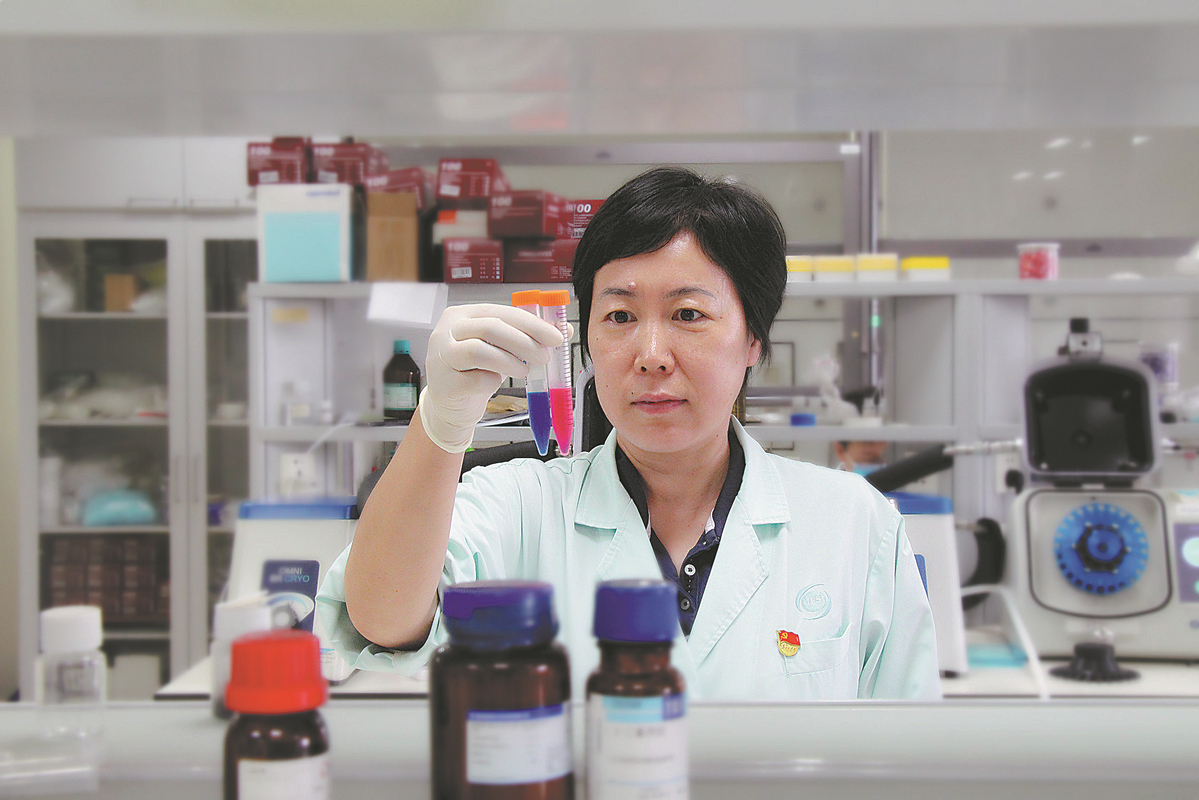Toxicologist's method aids doped victims
By ZHOU WENTING in Shanghai | CHINA DAILY | Updated: 2021-12-16 10:05

Many people who have been drugged and sexually assaulted often do not report the crime. Even if they do, the report is usually made days or weeks after the incident, meaning that any trace of drugs in the blood or urine can no longer be found.
But Xiang Ping, vice-director of the department of forensic toxicology at the Academy of Forensic Science in Shanghai, has created a solution-a procedure that can identify the presence of incriminating drugs in hair.
This procedure, which was invented seven years ago, and other technical means recently earned Xiang the "Shanghai Craftsman" accolade, which recognizes professionals who possess outstanding skills and have made significant contributions to society. According to Xiang, the procedure has been constantly refined over the years and can now indicate the exact date that the victim was drugged.
Xiang, the only member from the Chinese mainland in the Society of Hair Testing and the China representative at the International Association of Forensic Toxicologists, added that the technique will soon be widely used in the daily operations of her department.
As a leading forensic toxicology agency in the country, the department that Xiang works at has received 20,000 samples related to cases of poisoning, drug use, drunk driving, and driving under the influence of drugs from police, prosecuting agencies, courts and hospitals so far this year.
Her procedure has been especially useful for hit-and-run cases because it allows the authorities to determine if the offender was drunk on the day the accident took place. The procedure has also been used in high-profile cases. In 2013, Xiang was the lead expert in a case to determine the toxic substance used to poison a medical student at Shanghai Fudan University.
According to Xiang, the sample taken from the student, who had multiple organ failure and later died, was put through her procedure, which can quickly identify the presence of 200 common poisons and drugs usually found in 95 percent of cases in about four hours.
In this case, the substance used in the crime was beyond this scope, but Xiang nevertheless managed to identify it after more detailed tests.
The perpetrator, Lin Senhao, was later sentenced to death.
Xiang, who studied pharmacy in university and whose father was a renowned doctor, started her career at a time when the forensic toxicology scene in the city was still at its nascent stage. She recalled having to travel to drug factories across many cities by train just to collect samples so that she could explore ways of detection and identification at the lab.
"In the initial years, we had to work really hard to win the trust of hospitals and the police. We did so by reassuring them that we would be able to perform toxic substance testing at all times of the day," she said.
The efforts of Xiang's and her team eventually paid off when they established a comprehensive forensic toxicology database that allowed them to create the standards that determine the severity of poisoning in individuals.
Xiang has in recent years participated in a series of international industry conferences to learn about the latest technological developments in her field and promote the development of forensic toxicology in China. "We already have a leading position internationally. Many of our peers from overseas would often be interested in our reports and be amazed by our techniques," she said.
Despite the chemical nature of her job, Xiang sees herself as someone who helps upload justice. "Our job is to safeguard righteous people with science," she said.
























